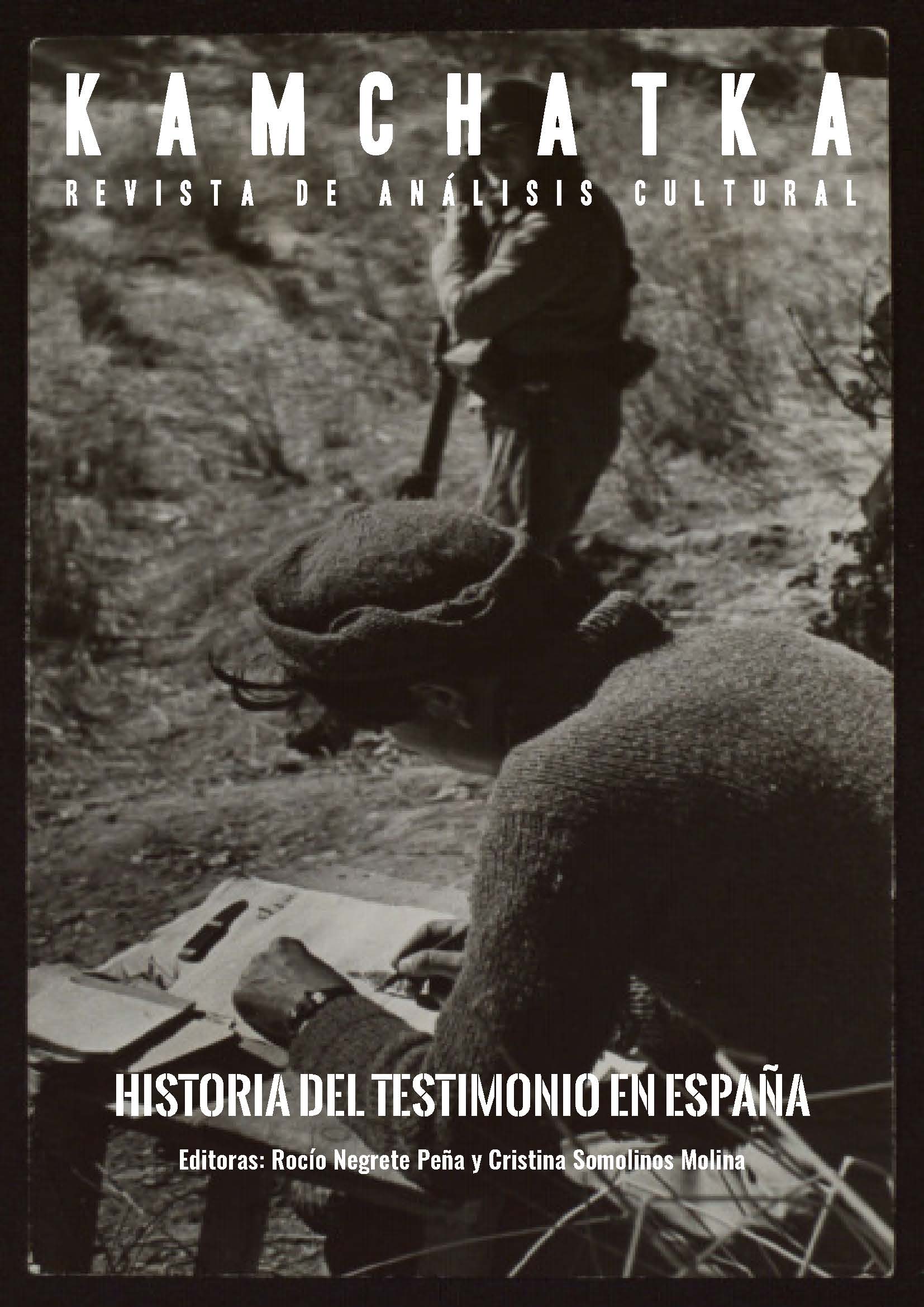“'Raise Ravens' and They will Take Out Your Eyes”: Feminine Fantasies of Dissent in Franco’s Time
DOI:
https://doi.org/10.7203/KAM.21.24855Keywords:
Film analysis, Feminism, Franquism, History of cinema, Spanish cinema, Psychoanalysis. Abstract
Abstract
This work addresses the analysis of Cría cuervos (1975) by Aragonese filmmaker Carlos Saura, a border crossing film towards the period after the death of Franco shot in a key moment of the transition period to democracy (1975-1982). A family melodrama that explores the tensions of the normative gender ideals and the conditions of life of women within the context of the bourgeois patriarchal institution of the family portrayed as an allegorical representation of Franco’s regime and its moral corruption. The study departs from a methodological approach that turns to Feminist Film Theory in order to explore the staging of the Oedipal conflicts within the family cell, inasmuch as it works as a political metaphor of the dictatorship, within a dramaturgy that resorts to parricide as a central narrative leitmotiv of its ideological dissent, that is to say, as a symbolic act of transgression and feminine resistance against the regime.
 Downloads
Downloads
 References
References
ALTUNA, Maialen. y LLONA, Miren. (2022). “Privilegios, fisuras y disidencias corporales. Subjetividades femeninas de resistencia en el franquismo”. Ayer (Avance en línea). Doi: 10.55509/ayer/793.
BUTLER, Judith. (2007). El género en disputa: El feminismo y la subversión de la identidad. Barcelona: Paidós.
D´LUGO, Marvin. (1991). The Films of Carlos Saura (The Practice of Seeing). Princeton: Princeton University Press.
DOANE, Mary Ann. (1987). The Desire to Desire (The Woman’s Film of the 1940s). Bloomington: Indiana University Press.
ELSAESSER, Thomas. (1972). “Tales of Sound and Fury: Observations on the Family Melodrama”. En Marcia LANDY (Ed.), Imitations of Life (a reader on Film & Television Melodrama (69-91). Detroit: Wayne State University Press.
FREUD, Sigmund. (1917). “La aflicción y la melancolía”. En Sigmund FREUD (1967), Obras Completas (1075-1082). Vol. I. Biblioteca Nueva de Madrid.
GÁMEZ FUENTES, María José. (2001). “Maternidad y Ausencia en Cría cuervos de Carlos Saura”. Hispanic Research Journal, 2 (2), 153-164.
GENETTE, Gérard. (1989). Figuras III. Barcelona: Editorial Lumen.
HERNÁNDEZ, Javier y PÉREZ, Pablo. (2004). Voces en la niebla. El Cine durante la Transición española (1973-1982). Barcelona: Paidós.
HOPEWELL, John. (1989). El cine español después de Franco (1973-1988). Madrid: El Arquero.
HUNT, Mai (2021), “The inheritance of silence in Cría cuervos/Raise Ravens (Saura 1976) andJulieta (Almodóvar 2016)”. Studies in Spanish & Latin American Cinemas, 18 (2), 177–94.
ITUARTE, Leire. (2018). “Feminismo y cine de mujeres: categorización y debate durante los años setenta y ochenta”. Trípodos, (42), 107-120. http://www.tripodos.com/index.php/Facultat_Comunicacio_Blanquerna/article/view/525.
KINDER, Marsha. (1993). Blood Cinema (The Reconstruction of National Identity in Spain). Berkeley: University of California Press.
LAPLANCHE, Jean y PONTALIS, Jean - Bertrand. (2004). Diccionario de Psicoanálisis. Barcelona: Paidós.
LAURETIS, Teresa de. (1992). Alicia ya no (Feminismo, Semiótica, Cine). Madrid: Cátedra.
MORCILLO, Aurora. (2015). En cuerpo y alma (Ser mujer en tiempos de Franco). Madrid: Siglo XXI Editores.
NOWELL-SMITH, Geoffrey. (1977). “Minelli and Melodrama”. Screen, 18, (2), 113-119.
SÁNCHEZ VIDAL, Agustín. (1988). El cine de Carlos Saura. Zaragoza: Caja de Ahorros de la Inmaculada de Aragón.
SILVERMAN, Kaja. (1988). The Acoustic Mirror (The Female Voice in Psychoanalysis and Cinema). Bloomington: Indiana University Press.
THOMAS, Sarah (2019). Inhabiting the In-Between (Childhood and Cinema in Spain’s Long Transition). Toronto: University of Toronto Press.
WILLIAM EVANS, Peter. (1983). “Cría cuervos and the Daughters of Fascism”. Vida Hispánica, (33), Spring, 17-22.
Downloads
Published
How to Cite
-
Abstract841
-
Artículo PDF (Español)476
Issue
Section
License
This journal provides an immediate free access to the content on the principle that freely make investigation available to the public, which promotes an increased global knowledge exchange.
Unless otherwise indicated, texts published in this journal are under the license Attribution-NonComercial 4.0 by Creative Commons. These texts may be copied, distributed and publicly communicated whenever the publication’s author and title are quoted and whenever they are not used for commercial purposes. In any case, intellectual property of the articles and its potential economic rights entirely belong to its authors.
The full license can be consulted on https://creativecommons.org/licenses/by-nc/4.0/. We encourage authors to disseminate papers published in Kamchatka. Journal of cultural analysis electronically, in institutional digital repository or in their websites.





